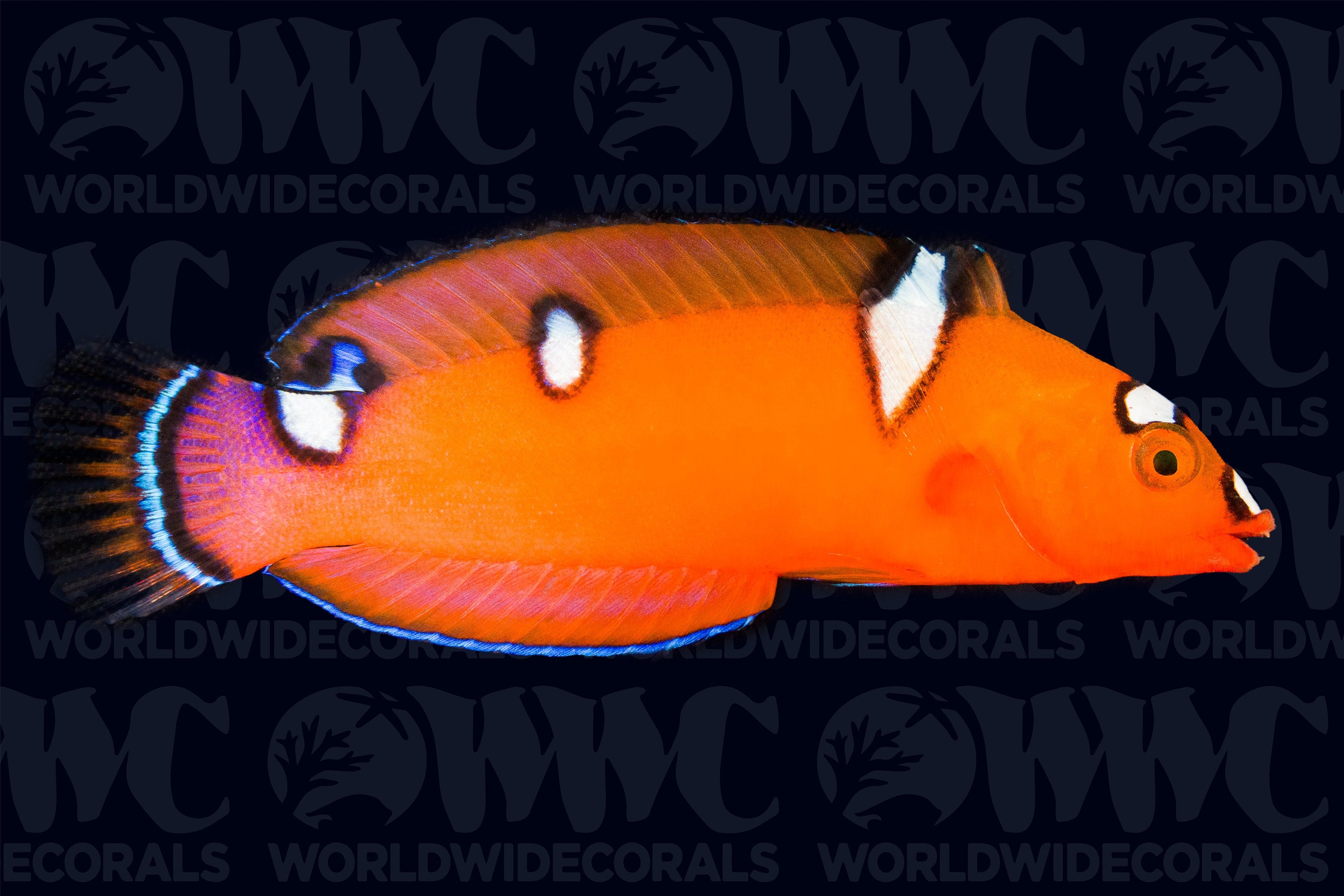Description
Coris gaimard
The Red Coris Wrasse is a striking and dynamic fish known for its bold personality and dramatic color transformation from juvenile to adult. Juveniles feature a bright orange-red body with bold white spots outlined in black, while adults develop a deep bluish-green body, vibrant facial markings, and a distinctive yellow tail. Coris Wrasse thrive in large aquariums with ample live rock for shelter and open space for swimming. A deep sandy substrate is essential, as they bury themselves at night or when startled. Due to their tendency to jump, a secure, tight-fitting lid is highly recommended. Carnivorous by nature, the Red Coris Wrasse feeds on a variety of frozen foods such as mysis and brine shrimp, along with high-quality pellets and flakes, ideally 2–3 times per day. It also contributes to aquarium health by helping control pests like flatworms and bristle worms. Reaching up to 16 inches in length, this wrasse requires a minimum tank size of 150 gallons. In the wild, it is found throughout the Indo-West Pacific—from the Christmas and Cocos-Keeling Islands to the Society and Tuamotu Islands, north to southern Japan and Hawaii, and south to Australia—typically inhabiting rubble zones and shallow reef flats or slopes at depths up to 150 feet.
The Red Coris Wrasse is a striking and dynamic fish known for its bold personality and dramatic color transformation from juvenile to adult. Juveniles feature a bright orange-red body with bold white spots outlined in black, while adults develop a deep bluish-green body, vibrant facial markings, and a distinctive yellow tail. Coris Wrasse thrive in large aquariums with ample live rock for shelter and open space for swimming. A deep sandy substrate is essential, as they bury themselves at night or when startled. Due to their tendency to jump, a secure, tight-fitting lid is highly recommended. Carnivorous by nature, the Red Coris Wrasse feeds on a variety of frozen foods such as mysis and brine shrimp, along with high-quality pellets and flakes, ideally 2–3 times per day. It also contributes to aquarium health by helping control pests like flatworms and bristle worms. Reaching up to 16 inches in length, this wrasse requires a minimum tank size of 150 gallons. In the wild, it is found throughout the Indo-West Pacific—from the Christmas and Cocos-Keeling Islands to the Society and Tuamotu Islands, north to southern Japan and Hawaii, and south to Australia—typically inhabiting rubble zones and shallow reef flats or slopes at depths up to 150 feet.
3 DAY GUARANTEE | Hassle Free | 100% Satisfaction | Online Orders Only


